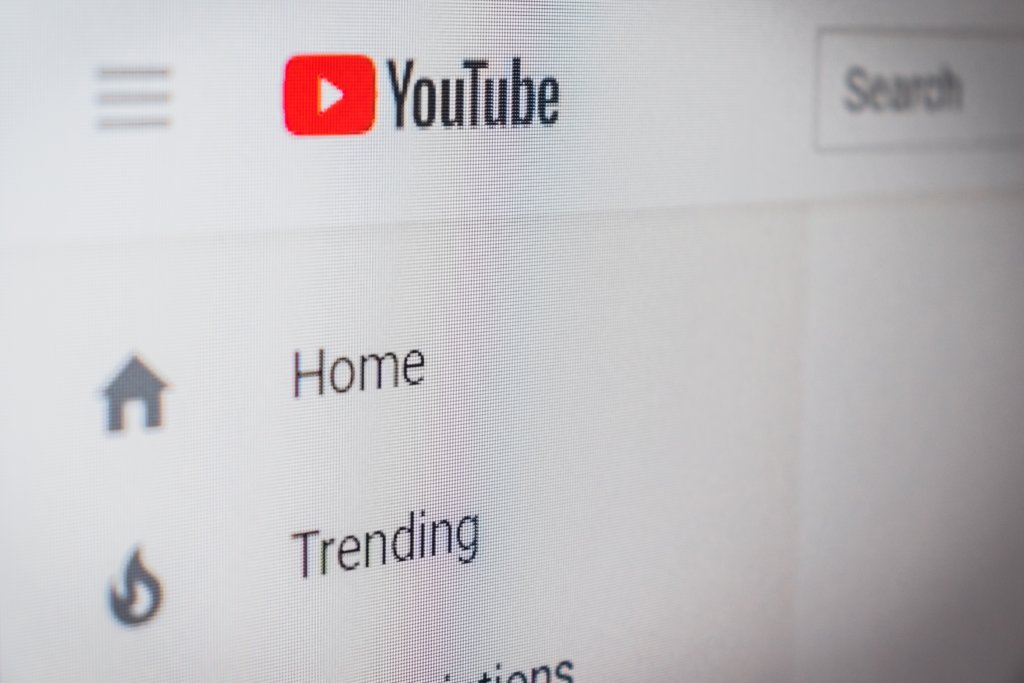If you’re a business owner, you know that video is huge right now.
And if you’re not using video as part of your marketing strategy, you’re missing out.
But what about YouTube?
Is it worth investing time and effort into optimizing your videos for this platform?
The answer is yes – here’s why.
As we all know, YouTube is the second most popular search engine after Google. And while there are over a billion active users on YouTube, the average person spends 40 minutes per day watching videos on this site.
Wait, what?
This presents a massive opportunity for businesses to reach their target audiences through this popular platform.
As a result, it’s critical to optimize your videos for Youtube SEO. You need to consider both on-page and off-page factors to ensure that your videos rank highly in YouTube search results.

Search Engine Optimization
SEO is the practice of optimizing a website (or web page) to rank higher in search engine results.
It’s no secret that SEO for YouTube videos can be complex and time-consuming. But it’s worth it – after all, ranking higher in YouTube search results can lead to more views and possibly more business for your company.
Youtube SEO
YouTube SEO is the process of optimizing your Youtube video to rank higher in search engine results.
Just like with any other type of SEO, there are several factors that you need to take into account, including title tags, meta descriptions, and keyword research. That’s why it’s noteworthy to focus on both on-page and off-page SEO when optimizing your YouTube videos.
This blog post will show you how to optimize your videos for YouTube SEO. We’ll cover both on-page and off-page optimization so that you can take advantage of this powerful platform.
By taking the time to improve your Youtube SEO, you’ll be able to get more views, subscribers, and ultimately, more leads for your business.
There are two main types of YouTube SEO: on-page and off-page.
On-Page Optimization for YouTube Videos
On-page optimization is all about optimizing your videos and playlists for search engines. This includes things like adding keywords to your title and description, etc.
Off-Page Optimization for YouTube Videos
Off-page optimization is all about promoting your videos and playlists through external sources. This includes things like social media, blog posts, and forums.
Both on-page and off-page optimization are essential for ranking higher in YouTube search results.
Keyword Research for Videos
Before we dive into on-page optimization, let’s briefly touch on keyword research. You must ensure that your videos are properly tagged with relevant keywords.
Keywords are Important
When you upload a video to YouTube, you have the opportunity to include keywords in the title, description, and tags. These are all critical factors in YouTube’s search algorithm.
Make sure to do your research and target keywords that are relevant to your video and have a high search volume. However, don’t get tempted to stuff your keywords, as this can have your Youtube account penalized.
To find the right keywords for your videos, start by brainstorming a list of potential topics. Then, use a keyword research tool like Google AdWords Keyword Planner to find the most popular keywords for your topic.
Once you have a list of keywords, you can start optimizing your videos. To rank higher in YouTube search results, there are a few on-page elements you need to optimize. As an example, here are some of the factors to consider:
Target Audience
The target audience is another important ranking factor for YouTube videos. YouTube uses this metric to determine which videos are relevant to a user’s search query. If your video applies to a user’s search query, it will rank higher in the search results.
To ensure that your videos are relevant to your target audience, you should use keyword research to find keywords that your target audience is searching for. You can then use these keywords in your videos to ensure they rank higher in the search results.
Title
Your title is one of the most important ranking factors for YouTube SEO. Ensure your title is keyword-rich and includes relevant information about your video.
Your title should be descriptive and give viewers an idea of your video. However, don’t stuff your title with keywords, as this will not only turn viewers off but could also penalize your video.
Description
Your video’s description should be engaging and informative. It should also include keywords that you want to rank for. Remember to keep your description under 500 words, so it doesn’t get cut off in the search results.
Tags
Tags are another important ranking factor for YouTube SEO. They help YouTube understand your video and match it with the right keywords. Make sure to include relevant, high-volume keywords in your tags.
Thumbnail image
Your thumbnail image is what appears in the search results, so make sure it’s eye-catching and relevant to your video. You can use online software like Canva to create a custom thumbnail image.
Closed captions
Closed captions are essential for two reasons: first, they make your videos accessible to a broader audience; second, they’re a ranking factor for YouTube SEO. Make sure to add closed captions to your videos.
To generate closed captions automatically, you can use YouTube’s captioning tool. You can also transcribe your video manually and upload the transcript as a closed caption file.
Transcripts
Transcripts are a great way to make your videos more accessible. They’re also a helpful SEO tool, as they give YouTube more information about your video’s content. If you don’t have the time to transcribe your videos, you can use a service like Rev.com to make it easy.
Annotations
Annotations are a great way to engage with your viewers and encourage them to take action. You can use annotations to promote your other videos, drive traffic to your website, or encourage viewers to subscribe to your channel.
To add annotations to your videos, go to the Annotations tab in YouTube Creator Studio. From there, you can choose from various annotation types, including calls to action, links, and notes.
Cards
Cards are a new feature that allows you to add interactive elements to your videos. You can use cards to promote your other videos, drive traffic to your website, or encourage viewers to subscribe to your channel.
End screens
End screens are a great way to keep viewers engaged with your channel. You can use end screens to promote your other videos, drive traffic to your website, or encourage viewers to subscribe to your channel.
To get the most out of your on-page optimization, it’s crucial to A/B test different elements on your YouTube page. Try other titles, descriptions, and thumbnail images to see what gets the most views and engagement. Then, stick with the elements that are performing well.
Off-page SEO for YouTube
This technique involves promoting your videos on other popular websites and social media platforms. This helps to increase the visibility of your videos, which can lead to more views and subscribers.
There are many ways to promote your YouTube videos off-page.
You can promote your videos through paid advertising, social media, or collaboration with other YouTubers. The more people see your videos, the higher they rank in the search results.
Video Embedding
One popular method is to embed your videos on your website or blog. This helps to increase the visibility of your videos and can lead to more views.
To embed a video on your website, copy the embed code from YouTube and paste it into your website’s HTML code.
This will cause the video to appear on your website, and the SERPs will count any views from your website towards your video’s view count.
Social Media
You can also share your videos on social media or use paid advertising to reach a wider audience. There are many social media sites that you can use to promote your videos.
The most popular platforms are Instagram, Facebook, and Twitter. You can also use social bookmarking sites like Reddit and StumbleUpon to promote your videos.
YouTube Ads
You can use YouTube Ads to promote your videos to a wider audience. You can target your ads by location, age, gender, and interests.
Paid advertising is a great way to reach a larger audience, but it can be expensive. If you’re on a tight budget, you can use other methods to promote your videos.
Collaboration with other Youtube Creators
Another great way to promote your videos is to collaborate with other YouTubers. This can help you reach a new audience and get more subscribers.
You can search for YouTubers in your niche to find potential collaborators using the “search” function on YouTube. You can also use social media to find potential collaborators. Twitter is an excellent platform for finding YouTubers to collaborate with.
When reaching out to potential collaborators, include a link to your channel and some of your best videos. This tactic will help them understand your content and whether or not it would be a good fit for their channel.
Finally, make sure to take advantage of YouTube’s advanced features.
These include YouTube SEO tools like keywords explorer and the video insights tool. These tools can help you understand what keywords to target and how your videos perform in the search results.
You can optimize your videos for Off-page YouTube SEO and get more views, subscribers, and traffic to your website from the tips above.
Youtube Ranking Factors
Video Quality
One of the most important ranking factors for YouTube videos is video quality. Make sure that your videos are high-quality and offer value to your viewers. This will help to ensure that your videos rank higher in the search results.
Video Length
Another important ranking factor for YouTube videos is video length. Studies have shown that longer videos tend to rank higher in search results. So, if you want your videos to rank higher, make sure to create longer videos.
User Engagement
YouTube looks at factors like the number of views, likes, comments, and shares to determine how engaging a video is. User engagement is another important ranking factor for YouTube videos. The more engagement a video has, the higher it will rank in the search results.
Watch Time
Watch time is the amount of time that people spend watching your videos. YouTube wants people to watch your videos for a long time, so it uses watch time as a ranking factor. The longer people watch your videos, the higher they rank in the search results.
Number of Subscribers
The number of subscribers is another important ranking factor for YouTube videos. YouTube uses this metric to determine how popular your channel is. The more subscribers you have, the higher your videos rank in the search results.
Number of Views
Finally, the number of views is a significant ranking element for YouTube videos. The more views a video has, the higher it will rank in the search results.
These are just some ranking factors that YouTube uses to determine the position of videos in the search results. If you want your videos to rank higher, make sure to optimize for these factors.
Hosting & Video Embedding
Youtube offers two ways to host videos on their site: through Youtube hosting or embedded videos. When you upload a video to Youtube, they host the video for you.
This is the most popular option since it’s free and easy to use. You can also embed Youtube videos on your website or blog. This is a good option if you want to share a video but don’t want to host it yourself.
Consider a few things when deciding whether to host or embed your videos.
First, if you plan on using the video for marketing purposes, you’ll want to ensure it’s hosted on Youtube. This is because Youtube videos show up in Google search results, and you want people to be able to find your videos easily.
Second, if you’re worried about people downloading or sharing your video, you might want to consider embedding it instead of hosting it on Youtube. This is because when you embed a video, it’s harder for people to download or share it.
No matter which option you choose, make sure you optimize your videos for SEO. This will help people find your videos and make sure they’re able to watch them.
Final Thoughts
In conclusion, YouTube SEO is a great way to increase the visibility of your videos and get more views, subscribers, and traffic to your website.
Use the tips and tricks in this article to optimize your videos for the search engines. This will help to ensure that your videos rank higher in the search results and get more views.
Good luck!
About The Author
Rehj
With over 15 years of experience in copywriting, Rehj has established a reputation as a highly skilled and talented wordsmith. Rehj has honed their craft throughout her career, consistently producing top-quality content for various audiences and industries.
Her ability to understand their target audience, craft compelling narratives, and write in a style that resonates with their audience has made them a sought-after copywriter in their field. Rehj’s passion for writing and commitment to producing top-notch content has driven their success and established them as a trusted voice in copywriting.








